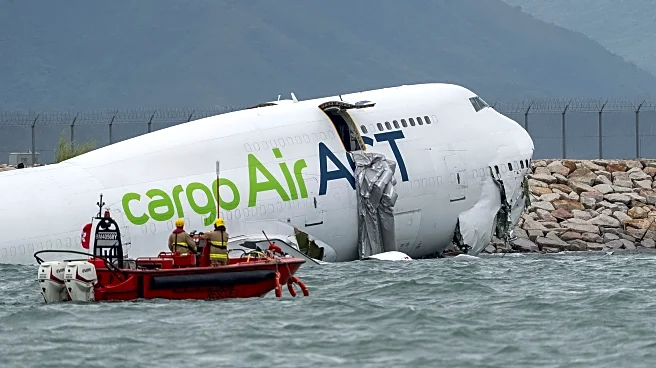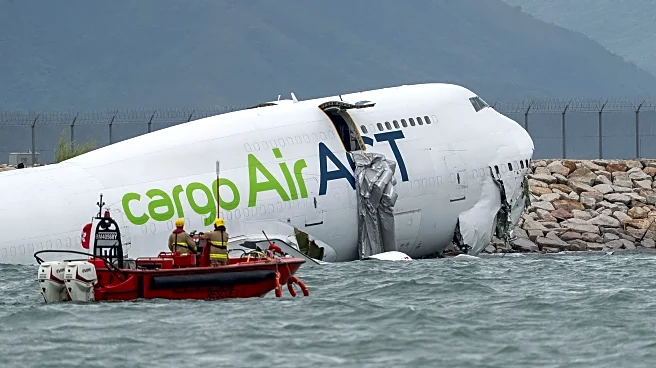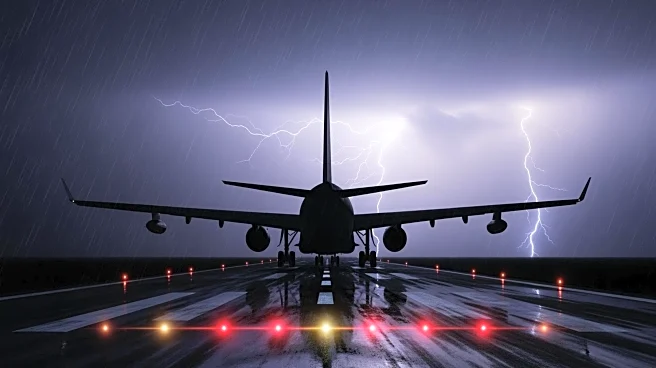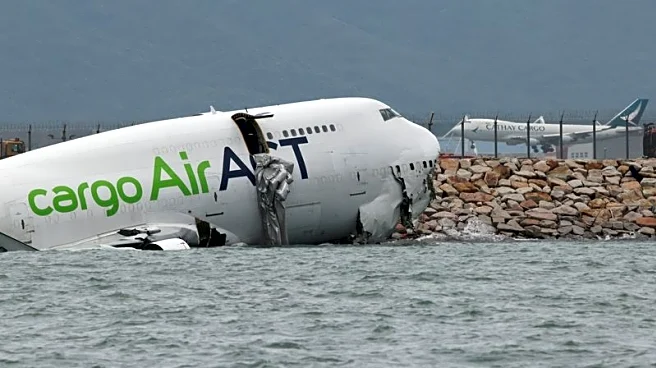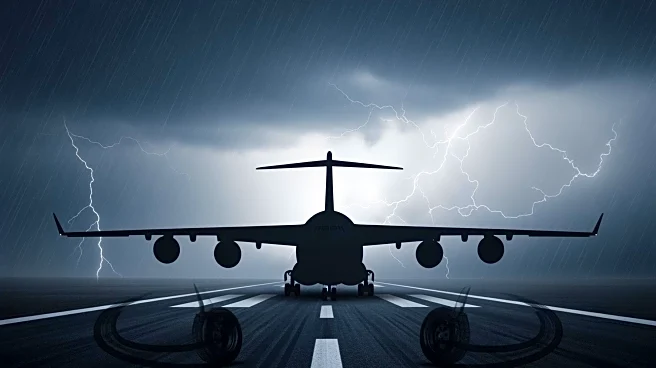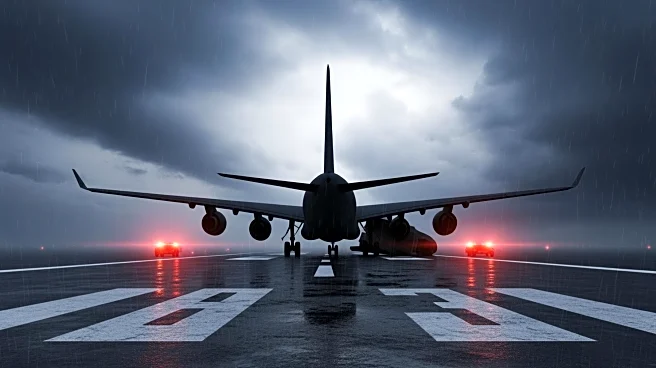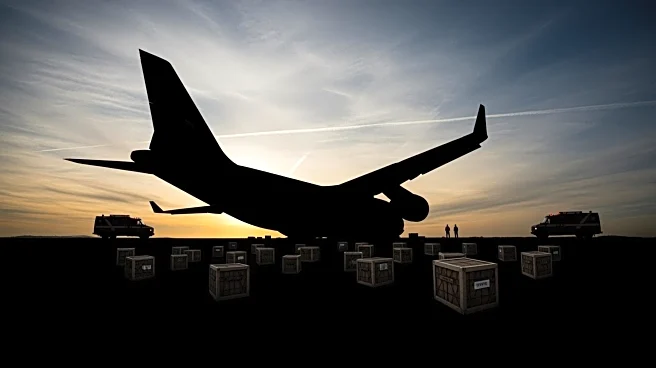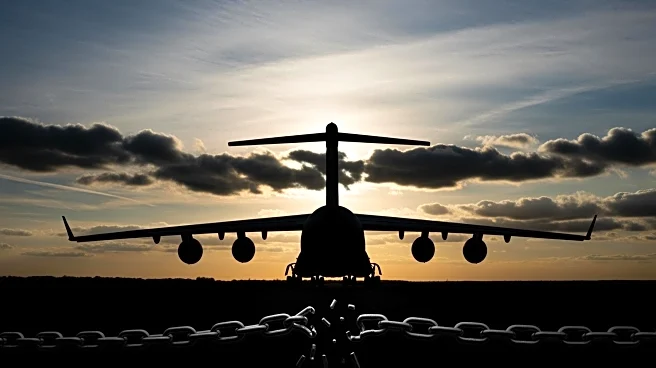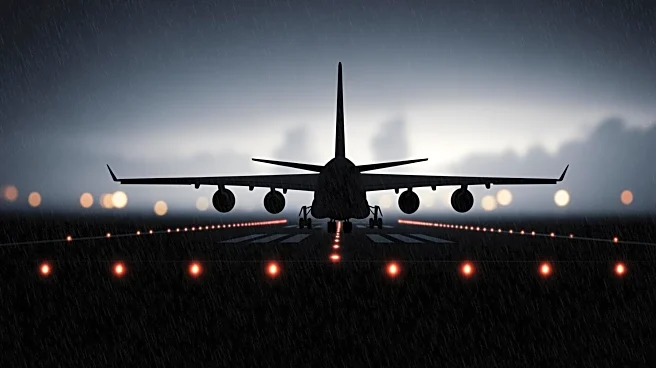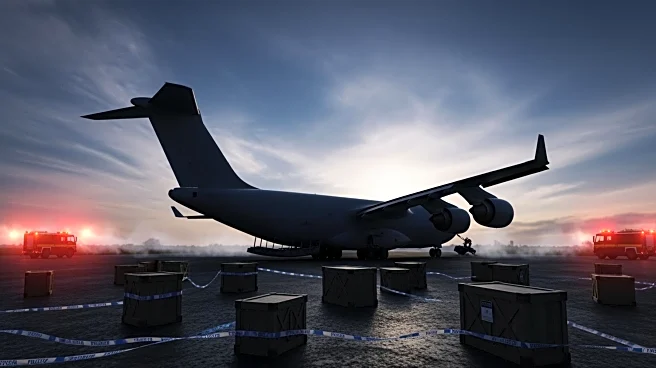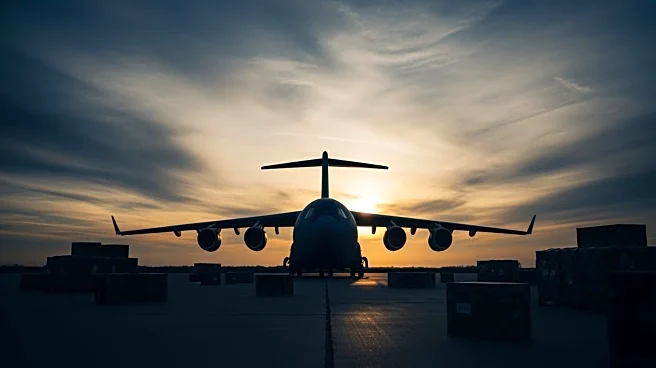What's Happening?
A cargo plane operated by Turkish freight carrier AirACT on behalf of Emirates skidded off the runway at Hong Kong International Airport, resulting in the deaths of two ground staff. The incident occurred as the plane, arriving from Dubai, veered off the north
runway and collided with a patrol vehicle before plunging into the sea. The crash happened around 3:50 a.m. local time. Four crew members on board the Boeing 747 were rescued and taken to the hospital. The north runway has been closed, but the airport's other two runways remain operational. An investigation is underway to determine the cause of the crash, focusing on the plane's path and the conditions at the time of landing.
Why It's Important?
This incident is significant as it highlights potential safety concerns at one of the world's busiest airports, known for its strong safety record. The crash not only resulted in the tragic loss of life but also raises questions about runway safety protocols and aircraft landing procedures. The aviation industry, particularly in Asia, will be closely monitoring the investigation's findings, which could lead to changes in safety regulations and operational procedures. The incident also underscores the importance of emergency response readiness, as the quick actions of rescue teams were crucial in saving the lives of the crew members.
What's Next?
The investigation will examine various factors, including weather conditions, runway signage, and the actions of both the aircraft crew and ground staff. The findings could lead to recommendations for improving safety measures at Hong Kong International Airport and potentially influence global aviation safety standards. Stakeholders such as the Civil Aviation Department, Emirates, and AirACT will likely be involved in reviewing and implementing any suggested changes. The incident may also prompt other airports to reassess their safety protocols to prevent similar occurrences.
Beyond the Headlines
This crash may have broader implications for the aviation industry, particularly concerning the use of wet-leased aircraft, where one airline provides the aircraft, crew, and insurance to another. The incident could lead to increased scrutiny of such arrangements and their impact on safety standards. Additionally, the emotional and financial toll on the families of the deceased ground staff highlights the human cost of aviation accidents, which often extends beyond the immediate victims.


